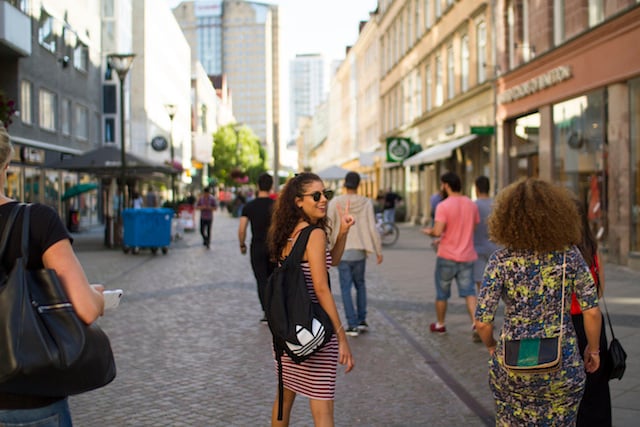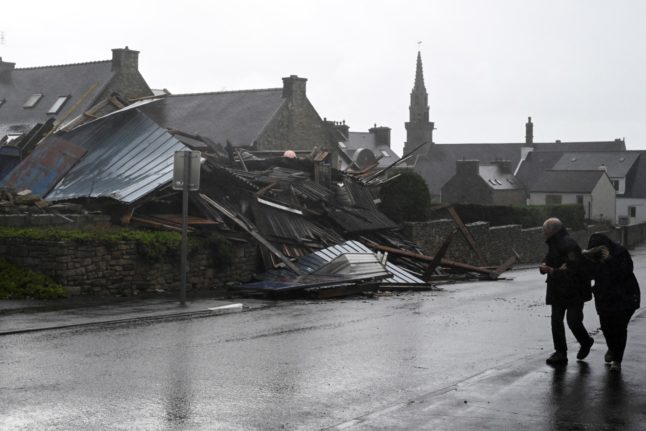For many locals in Malmö, the paradigm shift in the city’s identity occurred in 2002 when the iconic Kockums crane was sold to South Korea. The 138-metre crane, which was located in the harbour district, was a Malmö landmark and a throwback to the era of shipbuilding and heavy industry in the city. Indeed, grown men were said to have wept as the crane was shipped off to Asia.
Two years earlier, the Öresund bridge was opened while construction on the Turning Torso commenced in 2001. Malmö was changing at the turn of the millennium but, paradoxically, the city’s birth rate was low.
“In the early 2000s, there was an extremely low fertility rate all over Sweden; the lowest ever recorded. Nobody knows exactly why but the economy wasn't doing well and there was a trend of staying longer at university,” Karl McShane, senior advisor at the City of Malmö, tells The Local.
Malmö reached 300,000 inhabitants by 2011 and in June 2019, the population stands at 341,000. While the refugee crisis of recent times had an understandable spike on the city’s numbers, that is only telling a portion of the story explains McShane.
“Non-refugee immigration has increased. Even in peak years, refugee migration only made up one-third of all migration. Two thirds of the people moving to Malmö come from other municipalities in Sweden,” says McShane who compiles data population reports for the City of Malmö.
Click here to find out more about developments in Malmö
.jpg) Photo: Karl McShane
Photo: Karl McShane
Malmö’s population grew by 1.7 percent in 2018 with Stockholm (1.3 percent) and Gothenburg (1.4 percent) trailing in the wake of the southern city for growth in numbers.
More than 40 percent of all new apartments built in Skåne in the 2010s have been constructed in the city while more than 30 percent of all jobs in the southern region of Skåne are located in Malmö. And that share is increasing; more than half of all new jobs in 2017 in Skåne were in Malmö. Tech firms and startups – with young workforces – have been drawn to Malmö due to the city’s proximity to continental Europe and cheaper office rental rates compared to Stockholm.
“The trends across the big three cities are the same. As long as there are more people coming in than leaving, the average age decreases, which has been the case for decades,” says McShane.
He adds, “We are seeing a constant pattern of movement within Sweden but at an increased volume. Young people move to the cities to work and study and then between the age of 30 to 40 they move to the suburbs in Skåne. You see the same pattern in Stockholm and Gothenburg but Malmö has an even younger demographic than both of those cities.
“There is no clear explanation for how Malmö got so young compared to Stockholm and Gothenburg. It's a trend that we see in other cities but it is stronger here.”
Indeed, the average age of Malmö residents has been decreasing since 1996. That is borne out by the statistics, which show that Malmö’s average age has decreased in spite of the fact that life expectancy has increased during the same period. In 2019, the average age of a man living in Malmö is 37.5 and a woman is 39.2. The national average is 40.3 for a man and 42.2 for a woman.
Click here to find out more about developments in Malmö
.jpg) Photo: Karl McShane
Photo: Karl McShane
Housing remains a hot topic in Malmö with supply struggling to meet the demand of the growing population. The City of Malmö has estimated that 80,000 new apartments are required and, at present, 50,000 are mooted to be in the pipeline by 2047.
In recent years, new apartment complexes have been built in the Triangeln areas of the city with continued expansion in Western Harbour. Going forward, the town’s planners have earmarked Hyllie, which is home to Malmö Arena, and Limhamn on the city’s coast to undergo substantial development for new housing.
Not encroaching on Skåne’s famous flat green landscape has also been factored into the city’s plans. While there will be more housing in Hyllie, a huge new green space will also be built.
A long-established factor that has made Malmö enticing to new arrivals is the city’s proximity to Copenhagen. The two cities could be set to get even closer if plans to extend the Copenhagen metro system come to fruition.
Talks began in earnest in 2018 to construct a 22-kilometre tunnel underneath the Öresund to further link Sweden with Denmark. If approved, the first metro trains going from Malmö to Copenhagen could be running by 2035.
“10,000 people commute across the bridge every day for work but that is nothing compared to what it could be. If the metro extension happens, it would be quicker and not conditional on weather plus there would be more frequent departures,” says McShane.
In addition to strengthening ties to Copenhagen, the City of Malmö has ongoing workshops where the town’s planners are sketching out just what the city needs in the future in terms of schools, bike tracks, etc.
“We are asking questions like how will people shop in 30 years time? How will we deal with pollution then? Doing what we are doing now is not an option,” concludes McShane.
p.p1 {margin: 0.0px 0.0px 0.0px 0.0px; font: 12.0px ‘Times New Roman’; color: #000000; -webkit-text-stroke: #000000}
p.p2 {margin: 0.0px 0.0px 0.0px 0.0px; font: 12.0px ‘Times New Roman’; color: #000000; -webkit-text-stroke: #000000; min-height: 15.0px}
p.p3 {margin: 0.0px 0.0px 0.0px 0.0px; font: 10.0px ‘Times New Roman’; color: #000000; -webkit-text-stroke: #000000}
span.s1 {font-kerning: none}
This article was produced by The Local Creative Studio and sponsored by Malmö stad.



 Please whitelist us to continue reading.
Please whitelist us to continue reading.